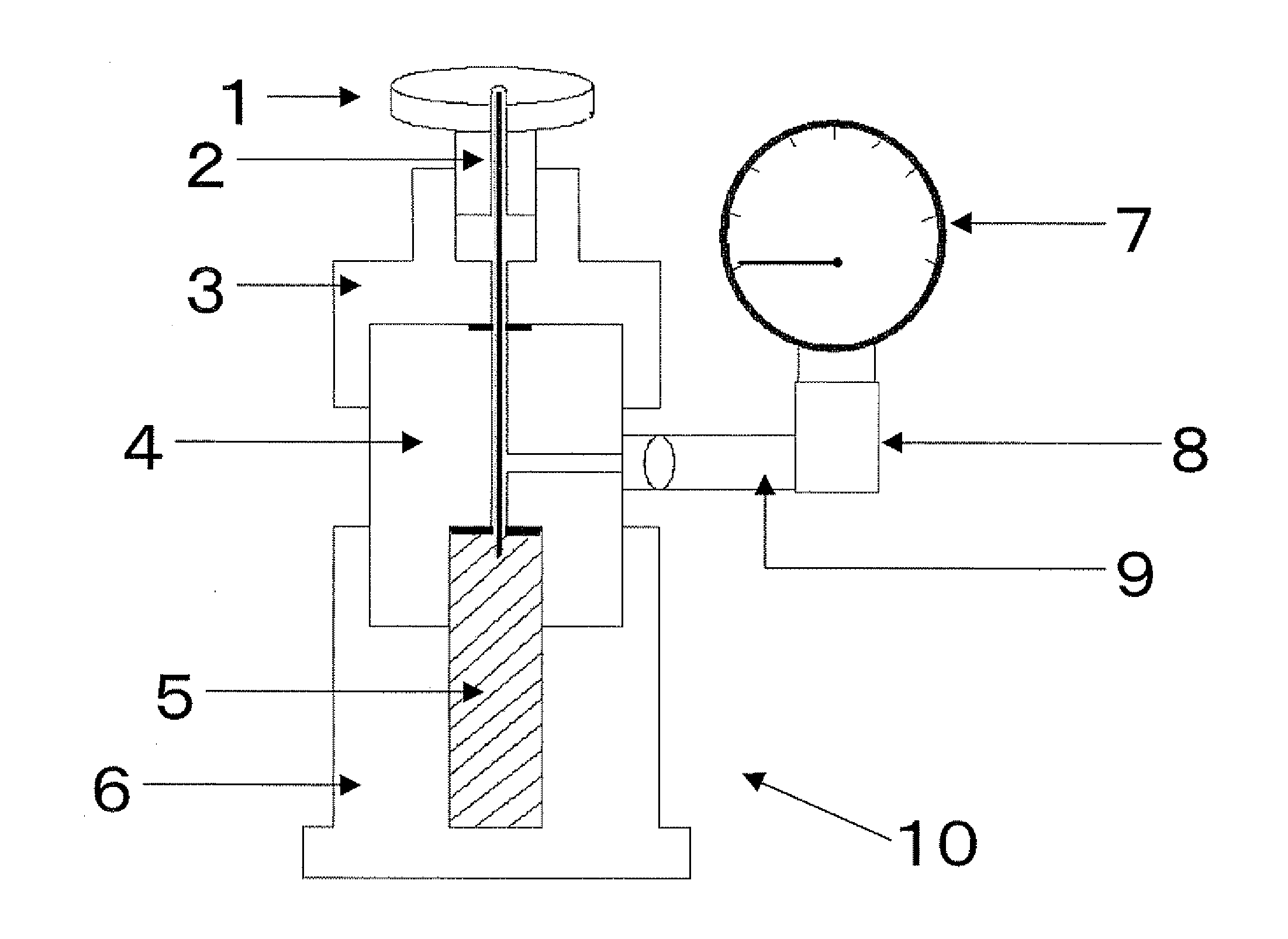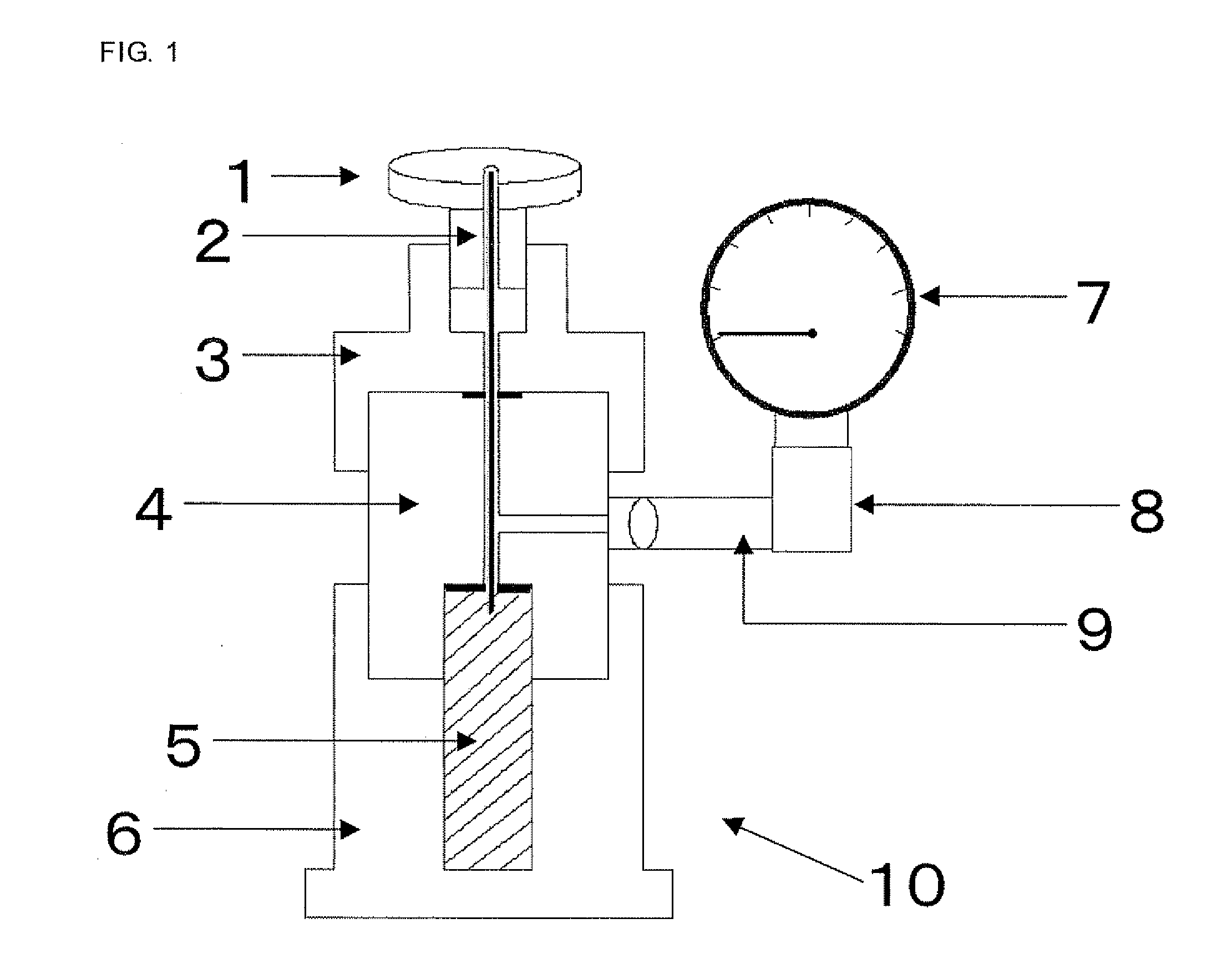Negative electrode material for non-aqueous electrolyte secondary batteries, manufacturing method therefor, and lithium-ion secondary batteries
a technology of negative electrodes and secondary batteries, which is applied in the manufacture of batteries, cell components, final products, etc., can solve the problems of unsatisfactory cycle performance, unsatisfactory characteristics, and cycle performance that has not reached a practical use level, so as to improve cycle performance, reduce the decomposition of electrolytes, and satisfy surface conductivity
- Summary
- Abstract
- Description
- Claims
- Application Information
AI Technical Summary
Benefits of technology
Problems solved by technology
Method used
Image
Examples
example 1
[0091]Particles having a mean particle size of 5 μm and a BET specific surface area of 3.5 m2 / g in which silicon nanoparticles were dispersed in silicon oxide were prepared. These particles were dried in an electric dryer under nitrogen flow for 6 hours at 120° C. to produce raw material particles [A].
[0092]Subsequently, a solution in which 30 g of magnesium diethoxide powder was dissolved in 400 g of dehydrated ethanol was prepared at room temperature, and 100 g of the previously dried raw material particles [A] were gradually added into the solution to prepare a slurry. These operations were performed while passing dry nitrogen through the beaker, in order to prevent moisture in the air from diffusing in the beaker. 5 g of pure water was subsequently added into the slurry with stirring over a period of 10 minutes, and the stirring was continued for 3 hours. The supernatant was then removed, and the mixture was filtered through a Buchner funnel under reduced pressure to give a cake...
example 2
[0113]100 g of the raw material particles [A] used in Example 1 were gradually added at room temperature into a 2 L beaker containing 300 g of dehydrated IPA (isopropyl alcohol) to prepare a slurry.
[0114]To the slurry was added a mixture of 100 g of dehydrated IPA and 50 g of aluminum tri-sec-butoxide prepared in a separate container, and the mixture was stirred. These operations were performed while passing dry nitrogen through the beaker, in order to prevent moisture in the air from diffusing in the beaker.
[0115]10 g of pure water was subsequently added into the slurry with stirring over a period of 10 minutes, and the stirring was continued for 3 hours. The supernatant was then removed, and the mixture was filtered through a Buchner funnel under reduced pressure to give a cake, which was then dried under reduced pressure for 3 hours at 100° C. A powder was thus obtained in an amount of 105 g. ICP analysis of this powder revealed that the powder had an Al content of 2.5% by mass.
[...
example 3
[0119]100 g of the raw material particles [A] used in Example 1 were gradually added at room temperature into a 2 L beaker containing 300 g of dehydrated IPA to prepare a slurry.
[0120]To the slurry was added a mixture of 100 g of dehydrated IPA and 50 g of titanium isopropoxide prepared in a separate container, and the mixture was stirred. These operations were performed while passing dry nitrogen through the beaker, in order to prevent moisture in the air from diffusing in the beaker.
[0121]10 g of pure water was subsequently added into the mixture with stirring over a period of 10 minutes, and the stirring was continued for 3 hours. The supernatant was then removed, and the mixture was filtered through a Buchner funnel under reduced pressure to give a cake, which was then dried under reduced pressure for 3 hours at 100° C. A powder was thus obtained in an amount of 106 g. ICP analysis of this powder revealed that the powder had a Ti content of 3.4% by mass.
[0122]This powder was sub...
PUM
| Property | Measurement | Unit |
|---|---|---|
| temperature | aaaaa | aaaaa |
| temperature | aaaaa | aaaaa |
| size | aaaaa | aaaaa |
Abstract
Description
Claims
Application Information
 Login to View More
Login to View More - R&D
- Intellectual Property
- Life Sciences
- Materials
- Tech Scout
- Unparalleled Data Quality
- Higher Quality Content
- 60% Fewer Hallucinations
Browse by: Latest US Patents, China's latest patents, Technical Efficacy Thesaurus, Application Domain, Technology Topic, Popular Technical Reports.
© 2025 PatSnap. All rights reserved.Legal|Privacy policy|Modern Slavery Act Transparency Statement|Sitemap|About US| Contact US: help@patsnap.com


